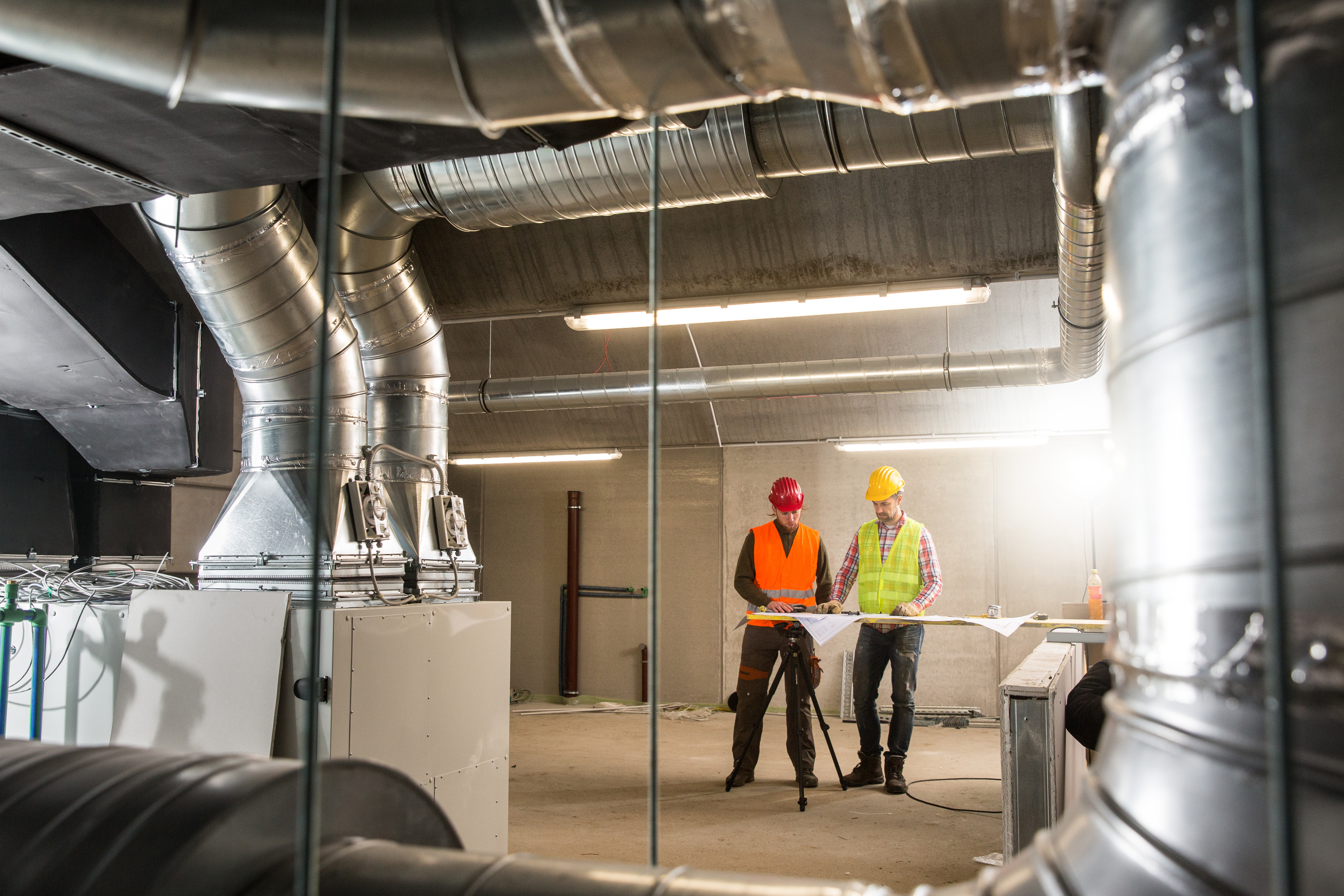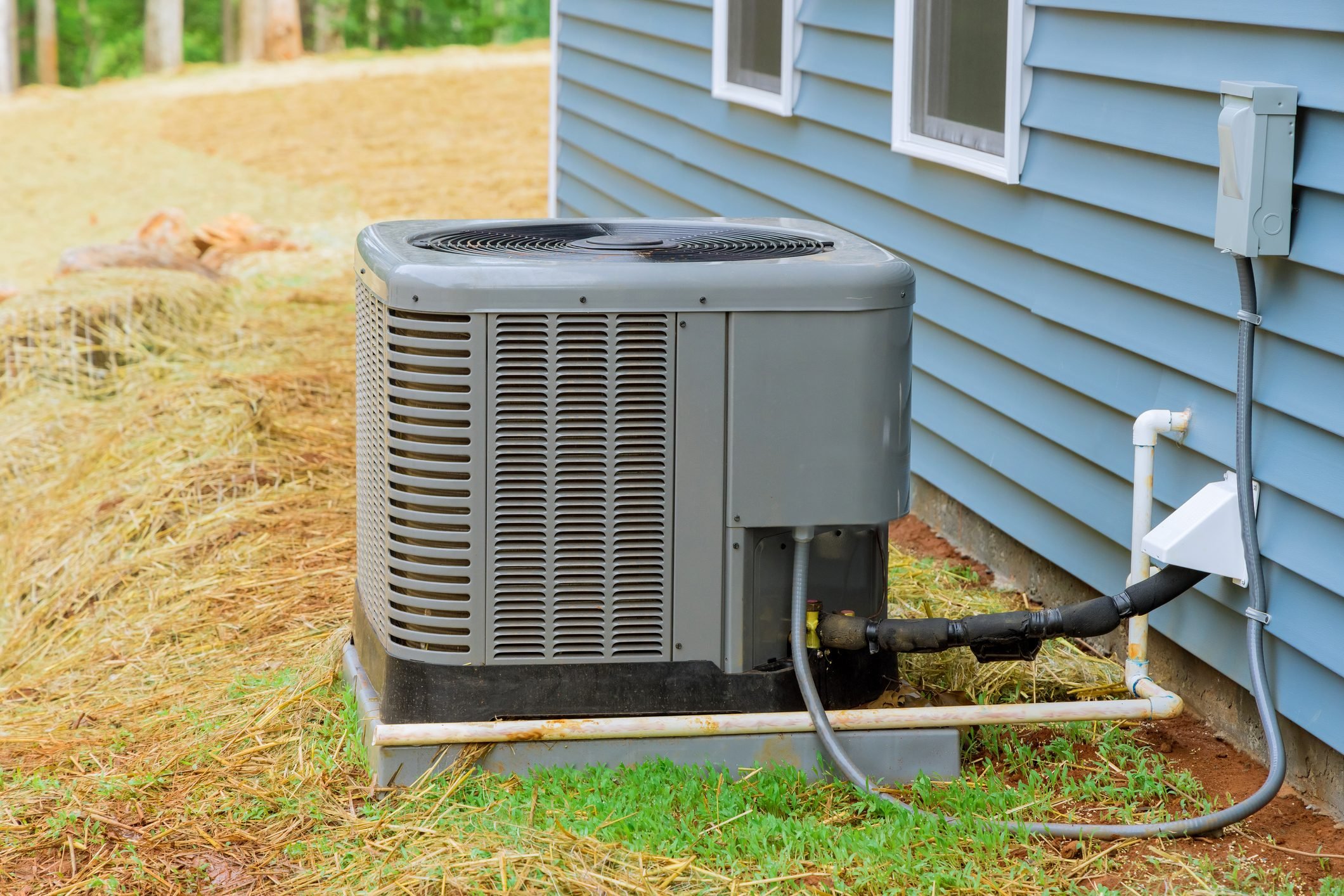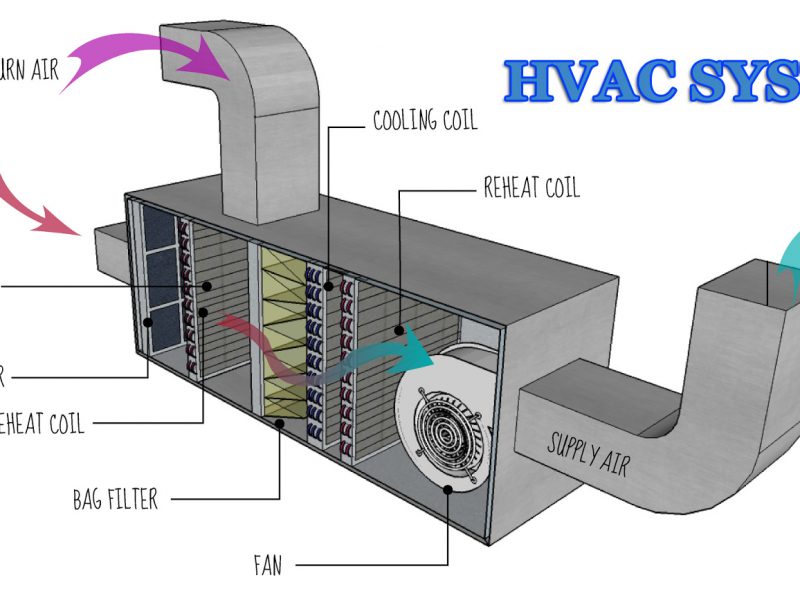Checking Out the Necessary Components of a Reliable HVAC System
An effective heating and cooling system is constructed on numerous crucial components that function in consistency. Each part, from the thermostat to the ductwork, plays an essential duty in preserving convenience and power performance. Understanding these aspects is vital for enhancing performance and boosting interior air top quality. As one takes a look at these elements, the intricate relationships between them reveal insights right into boosting total system effectiveness. What certain elements contribute most to this efficiency?
The Duty of the Thermostat in HVAC Performance

Usually neglected, the thermostat plays a vital duty in the performance of HVAC systems. This small tool serves as the key control center, managing temperature level setups and guaranteeing excellent comfort within an area. By precisely noticing the ambient temperature level, the thermostat interacts with the home heating, ventilation, and air conditioning units to preserve the wanted climate
A reliable thermostat reduces energy intake by activating the cooling and heating system only when necessary, thereby protecting against excessive heating or air conditioning. Modern wise and programmable thermostats enhance this effectiveness additionally by permitting users to set routines and from another location adjust setups, adjusting to everyday regimens.
In addition, the positioning of the thermostat is vital; incorrect location can cause incorrect temperature readings, leading to inefficient procedure. Overall, a well-functioning thermostat not only boosts comfort however also contributes noticeably to power cost savings and the longevity of the heating and cooling system.
Comprehending the Value of Air Filters
Air filters offer a necessary function in heating and cooling systems by assuring that the air circulating within an area remains tidy and healthy and balanced. These filters trap dust, irritants, and various other contaminants, preventing them from being recirculated throughout the setting. By capturing these particles, air filters add to boosted indoor air high quality, which can significantly benefit passengers' health, specifically those with allergies or respiratory problems.
Furthermore, keeping tidy air filters improves the performance of heating and cooling systems. Stopped up filters can restrict air movement, causing the system to work more difficult to keep wanted temperature levels, leading to boosted energy usage and higher energy expenses. Consistently replacing or cleaning up filters is an important upkeep step that can prolong the lifespan of a/c equipment. Inevitably, comprehending the significance of air filters permits house owners and structure supervisors to take proactive actions to ensure a well-functioning, efficient a/c system that promotes a secure and comfortable indoor atmosphere.

The Capability of the Heater and Heatpump
Heating systems and warmth pumps are critical parts of cooling and heating systems, accountable for giving heat during cooler months. Heaters run by home heating air via burning or electric resistance, then dispersing it throughout the home via ducts. They normally provide quick home heating and can be fueled by all-natural gas, electrical power, or oil, relying on the system type.
On the other hand, heat pumps move heat instead of generate it. They draw out warmth from the outdoors air or ground, also in low temperatures, and transfer it inside your home. HVAC experts. This twin capability permits heatpump to also provide air conditioning in warmer months, making them versatile choices for year-round climate control
Both systems require appropriate maintenance to guarantee effectiveness and durability. While heaters master severe cold, warmth pumps can be beneficial in modest environments. Understanding their distinct functionalities aids home owners in picking one of the most suitable option for their heating needs.
Discovering the Cooling System
The a/c unit is an important component of heating and cooling systems, offered in different types to fit different needs. Understanding the effectiveness scores of these devices is essential for making educated options concerning energy usage and price. This section will certainly discover the diverse kinds of a/c and make clear exactly how effectiveness scores impact efficiency.
Types of Air Conditioners
While various factors influence the selection of a/c systems, recognizing the different kinds readily available is essential for home owners and building managers alike. Central air conditioners are developed to cool down entire homes or structures, using a network of air ducts for airflow. Home window devices provide a more localized solution, suitable for solitary areas or tiny areas. Portable ac unit provide flexibility, permitting users to move the unit as required. Ductless mini-split systems are an additional option, incorporating the performance of central systems with the comfort of zoning, as they check here call for no ductwork. Geothermal systems harness the earth's temperature level for energy-efficient cooling. Each type includes distinct advantages, making informed choices necessary for effective environment control.

Efficiency Rankings Described
Understanding performance ratings is necessary for picking the best a/c unit, as these metrics offer understanding into the system's efficiency and energy usage. The most common score for a/c unit is the Seasonal Energy Efficiency Proportion (SEER), which gauges the cooling result during a common air conditioning period separated by the overall electrical power input. A higher SEER suggests much better performance. Furthermore, the Power Performance Proportion (EER) is used for determining effectiveness under details problems. An additional essential metric is the Power Star accreditation, which indicates that an unit fulfills strict energy performance standards. By assessing these ratings, consumers can make informed choices that not only maximize convenience yet also lower energy prices and environmental effect.
The Importance of Ductwork and Air movement
Efficient ductwork design and airflow administration play vital functions in the total effectiveness and efficiency of HVAC systems. Correct ductwork guarantees that conditioned air is dispersed equally throughout a room, reducing temperature fluctuations and improving comfort. Properly designed ducts minimize resistance to air movement, reducing the work on a/c equipment and inevitably decreasing energy consumption.
Air flow management includes strategically positioning vents and signs up to improve the flow of air. This prevents common concerns such as cool or warm areas, which can happen when airflow is obstructed or inadequately well balanced. Furthermore, the ideal air duct materials and insulation can additionally improve performance by minimizing warm loss or gain throughout air transportation.
An effective ductwork system not only adds to energy savings yet can additionally extend the life-span of cooling and heating devices by minimizing unneeded strain (HVAC experts). Recognizing the importance of ductwork and air movement is essential for attaining peak Cooling and heating system performance.
Routine Upkeep Practices to Improve Performance
Regular maintenance methods are necessary for making certain peak performance of cooling and heating systems. These methods include routine evaluations, cleaning, and needed repair work to keep the system running effectively. Regularly altering air filters is vital, as clogged up filters can block air flow and decrease effectiveness. On top of that, technicians must inspect and tidy evaporator and condenser coils to avoid overheating and energy wastage.
Yearly expert inspections are likewise suggested, as trained technicians can determine prospective issues prior to they rise. Lubing moving parts minimizes wear and tear, contributing to a longer life-span for the system. In addition, ensuring that the thermostat works correctly aids in preserving excellent temperature level control.

Often Asked Concerns
Exactly how Often Should I Change My Thermostat?
Thermostats must typically be replaced every 5 to ten years, depending on use and innovation advancements. Regular checks are a good idea to guarantee peak efficiency, especially if experiencing irregular temperature control or increased energy prices.
What Size Air Filter Is Best for My Cooling And Heating System?
The very best dimension air filter for an a/c system differs by unit layout. Generally, it's important to consult the owner's handbook or examine the existing filter dimensions to ensure peak performance and air quality.
Can I Mount a Heat Pump Myself?
Mounting a heatpump individually is feasible for knowledgeable individuals, however it needs understanding of electric systems and regional codes. Working with a specialist is recommended to ensure correct setup and suitable system efficiency.
Exactly how Do I Know if My Ductwork Is Reliable?
To figure out ductwork efficiency, one should look for leakages, measure air flow at vents, check insulation quality, and review temperature distinctions between supply and return ducts. Specialist evaluations can offer extensive understandings into overall performance.
What Are Indications My HVAC Needs Immediate Upkeep?
Signs that an a/c system requires prompt maintenance include unusual sounds, inconsistent temperatures, increased energy costs, unpleasant smells, and frequent biking. Addressing these issues without delay can stop further damages and warranty top system performance.
Air filters offer a crucial feature in Cooling and heating systems by assuring that the air flowing within an area continues to be tidy and healthy. In addition, maintaining tidy air filters boosts the efficiency of Heating and cooling systems. Ductless mini-split systems are one more option, combining the performance of central systems with the benefit of zoning, as they require no ductwork. Recognizing performance rankings is essential for choosing the right air conditioning device, as these metrics offer insight into the system's performance and power intake. The finest size air filter for a Cooling and heating system varies by unit style.